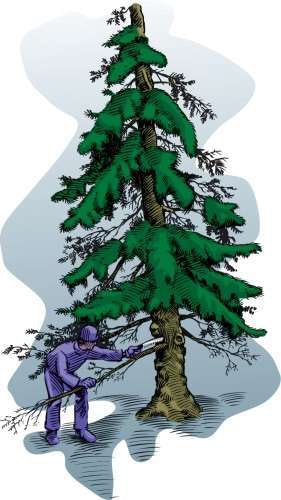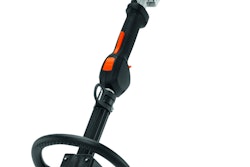 Photo: International Society of Arboriculture
Photo: International Society of ArboricultureThere are plenty of articles that outline when not to prune, but now is finally time to plan your pruning in the coming months.
Late winter/early spring is often prescribed as the optimal time to trim tree and shrub branches because there is less risk of disease and the cuts stress the tree less. Deciduous trees can be pruned during other times of the year to remove dead or broken branches, but February through March is the best time to do so.
The absence of leaves allows a clear view of all the branches, making it far easier to see what needs to be removed. The wounds are also able to heal more rapidly prior to spring growth.
Since it is almost that ideal timeframe, now is your chance to take a moment and consider what you are trying to accomplish with your pruning and how much should be done at this time.
Before you go out, shears blazing, here are some of the factors to think through ahead of time.
Purpose
Ask yourself what you hope to achieve by pruning a certain plant. Are you just looking for dead wood to remove or are you trying to train it to grow a certain way, such as an espalier? Your goal for the plant should decide where and how much you need to trim.
There are four main types of pruning, including cleaning, thinning, raising and reduction.
Amount
It is always better to prune too little than to over prune. Removing more than 25 percent of the crown can harm the tree’s ability to make food and its growth potential.
Depending on what your goal is, you may have to prune on a regular schedule. If so, make sure it’s a schedule to which you’re willing to commit a crew. Topiaries and formal hedges require special upkeep in the pruning department, so consider this before starting.
Species and condition
Having a strong horticulture background will help you know which plants respond best to pruning so you don’t harm or waste time on those that don’t need it.
Also, take time to evaluate the condition of the plant. If it is sick, remove the dead wood but try not to remove more than that, as it can stress the plant further.
Tools
A key component for doing a pruning job right is having the right tools. Make sure to keep the tools sterile and sharp since dull blades can shred branches and dirty ones can spread disease to other plants.
Pruning shears can be used for branches ¾ inches in diameter while lopping shears are used for those 1 ½ inches in diameter. Handsaws can handle branches over 1 inch in diameter, and some can even cut through 4 inches in diameter easily with their special blades.
Pole saws allow an extended reach but must be used carefully to create clean cuts. Hedge shears are designed for pruning hedges alone.
There are some plants that are best pruned in January, including oak trees and grape vines. When doing heavy pruning on bleeder trees, such as maple, birch and elm, it is best to prune them in the coldest weather.










